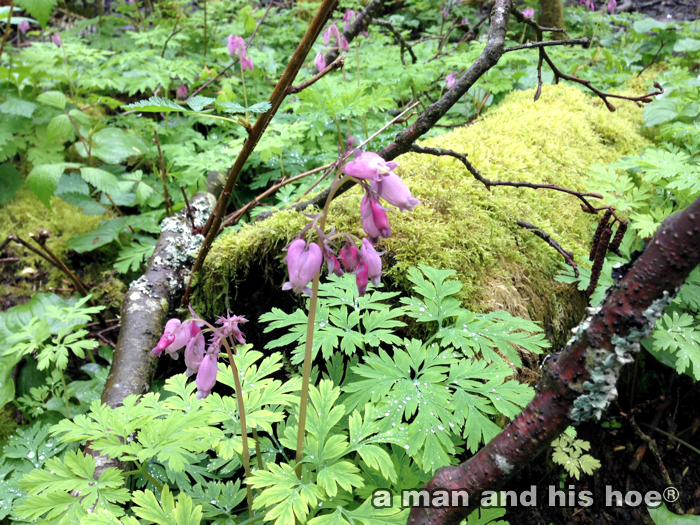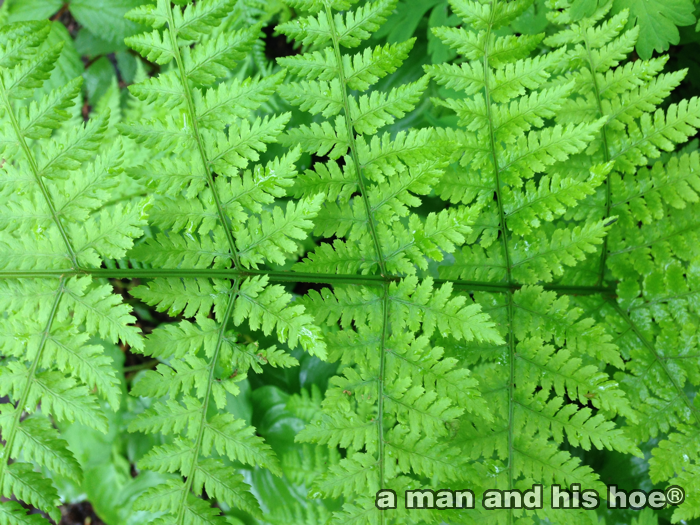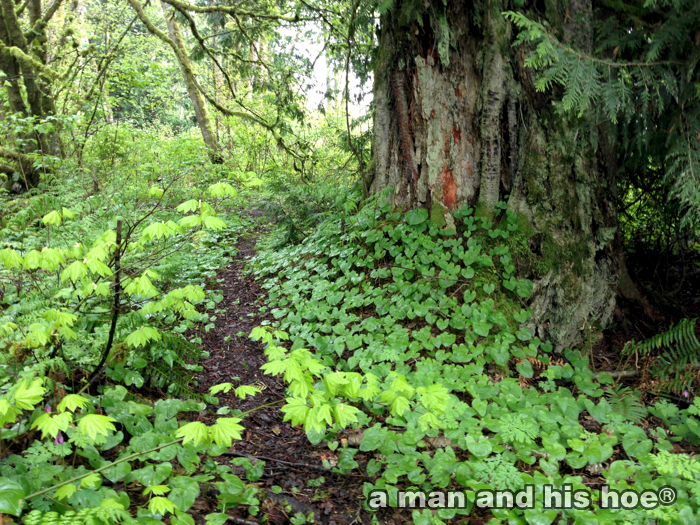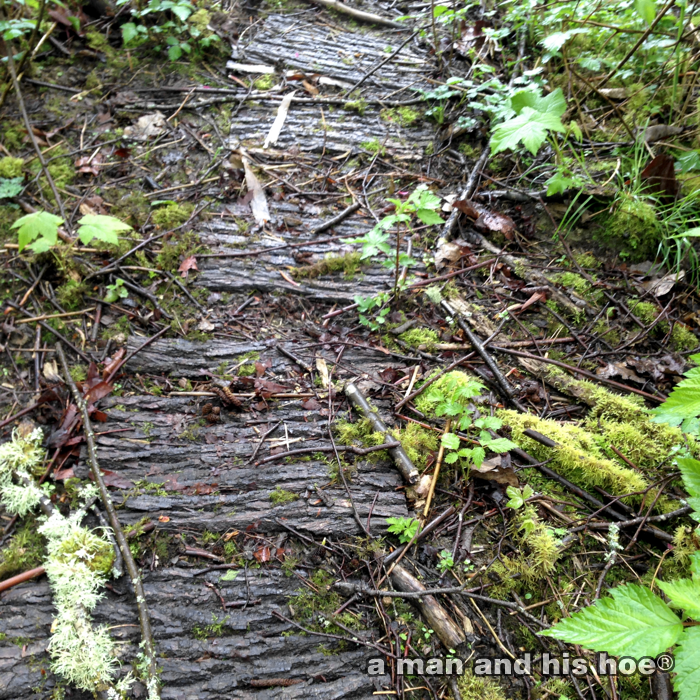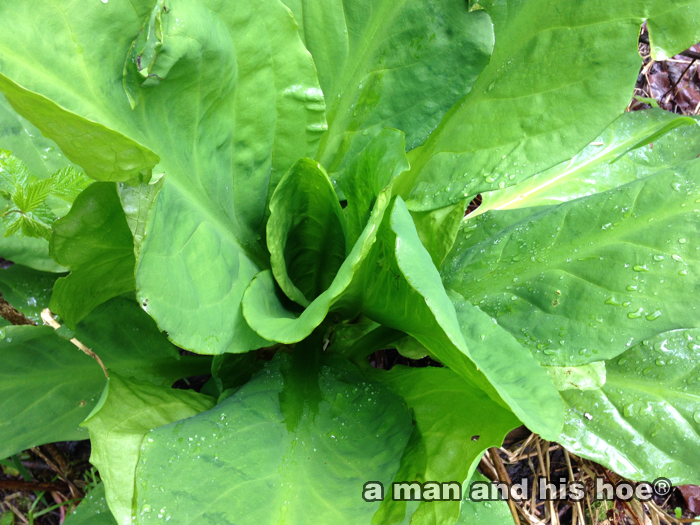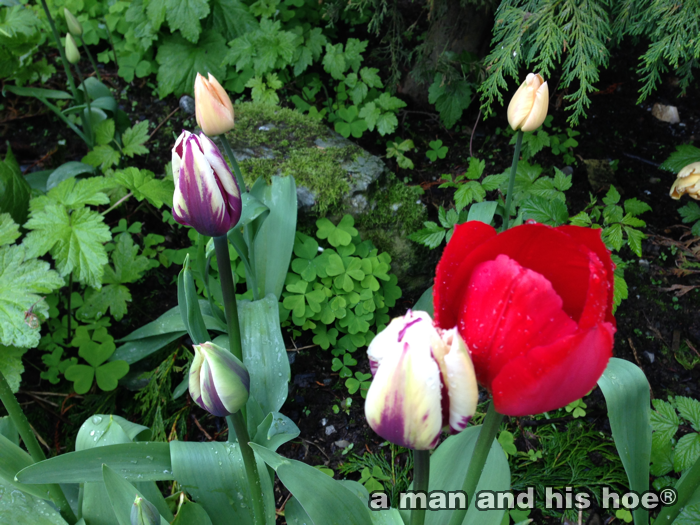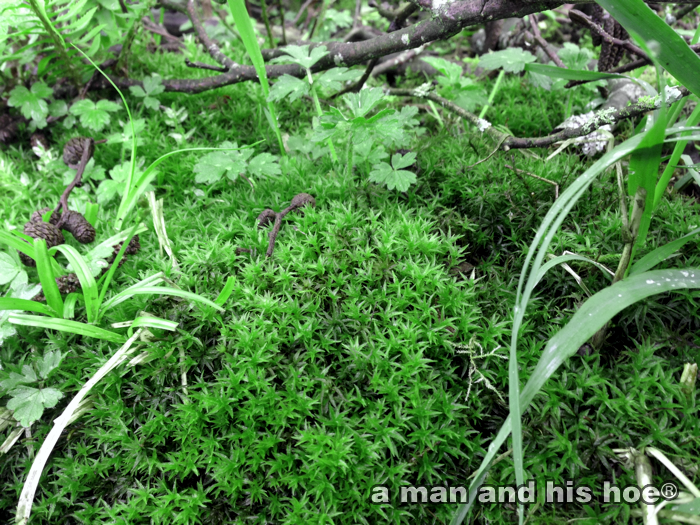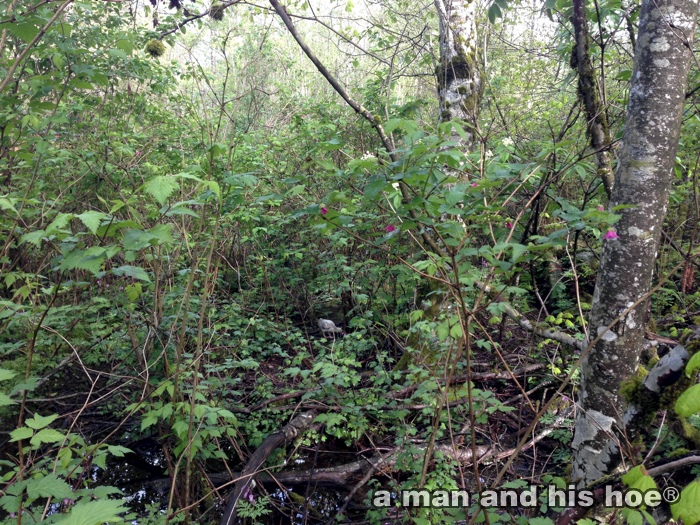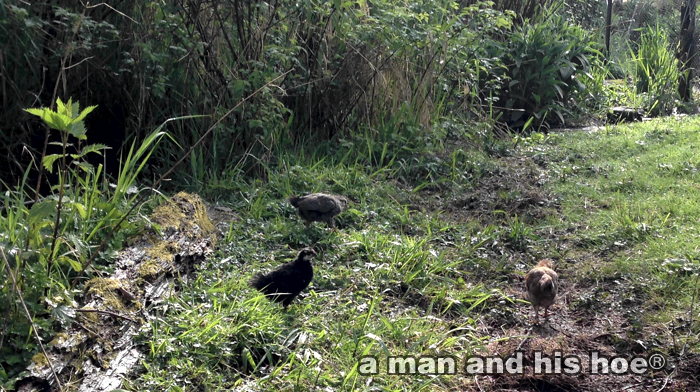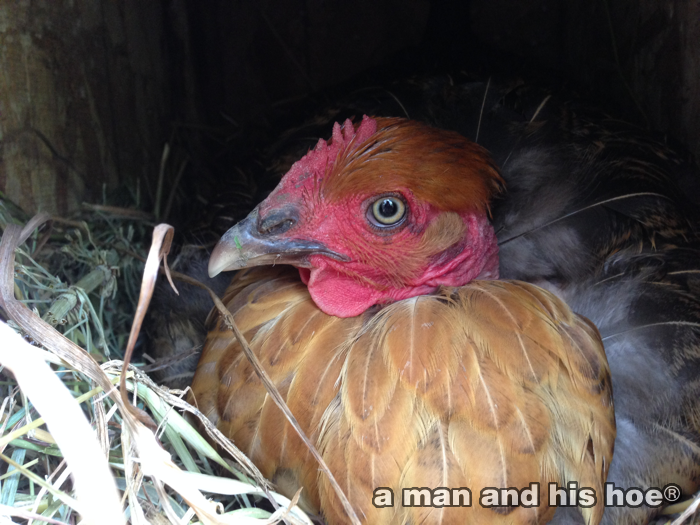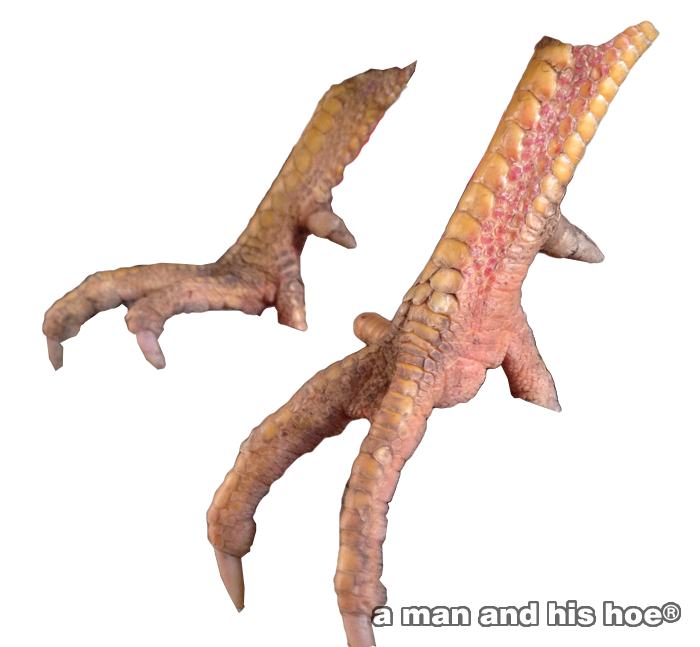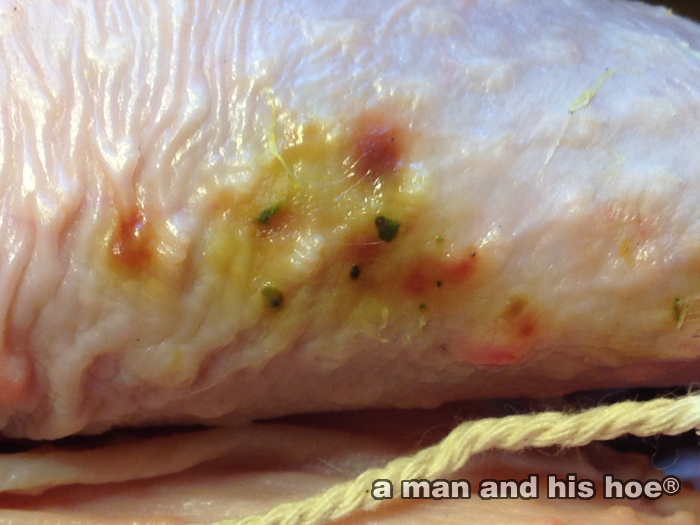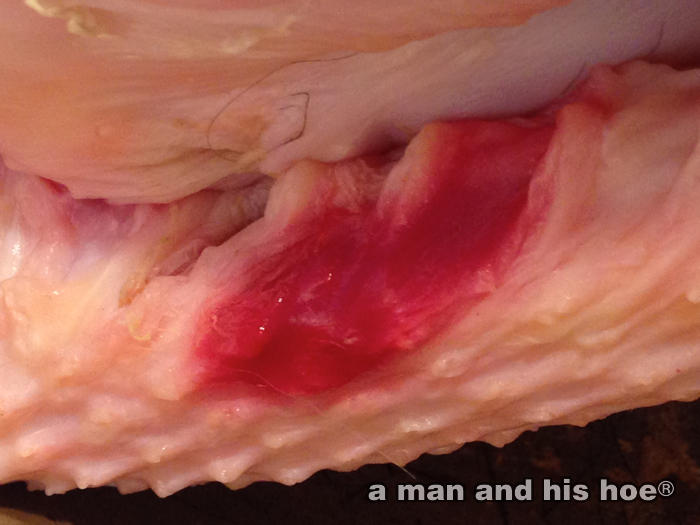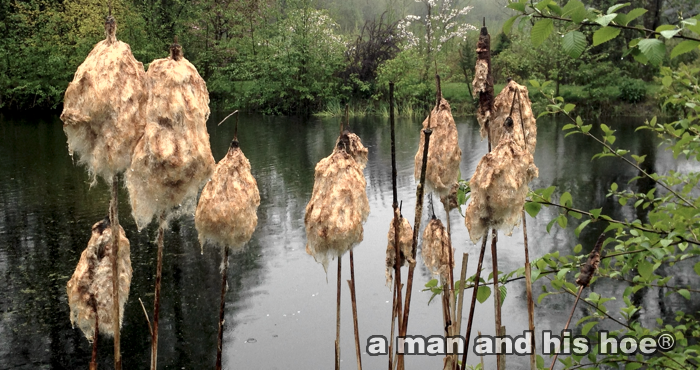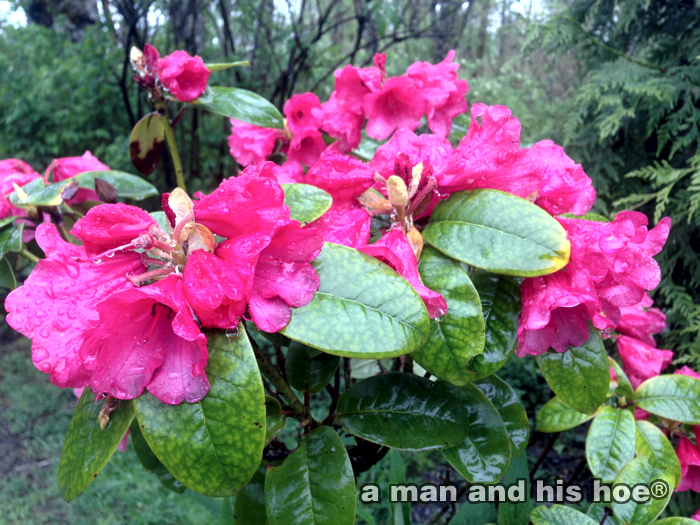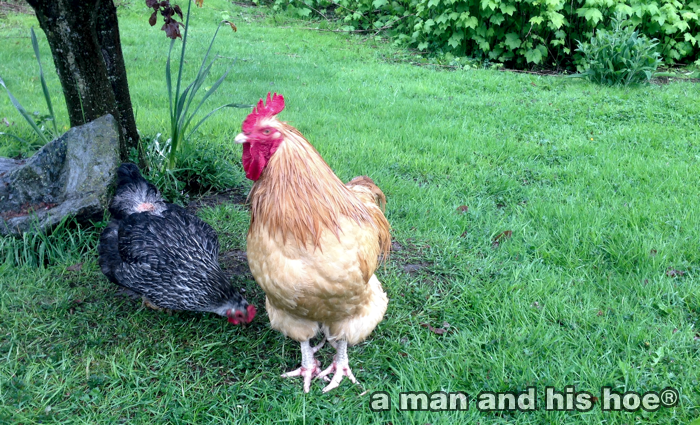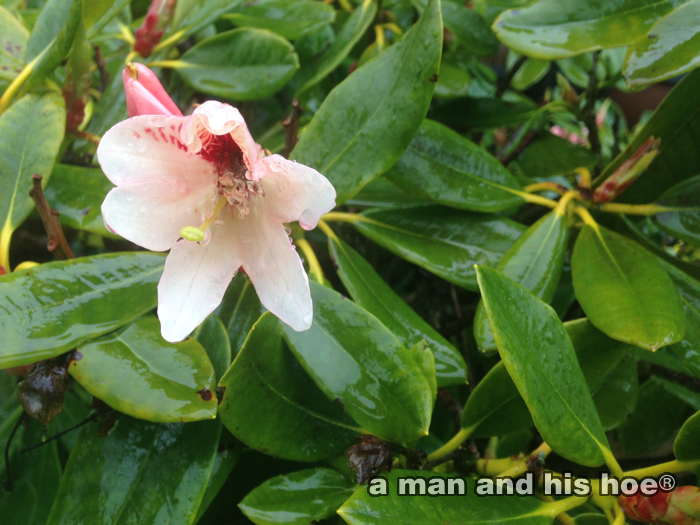
I have yet to figure this one out. Cognac has taken to sitting in the doorway of the chicken yard. She likes to roost on the doorsill, facing the inside of the chicken yard, causing a chicken traffic jams. Is she craving attention? Or does she forget why she is going back into the chicken yard and is trying to recall the reason? Is this what early-onset Alzheimer’s looks like in chickens?
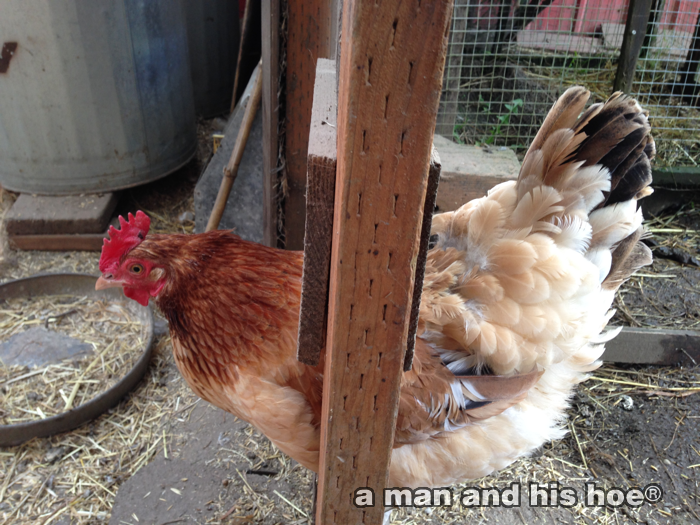
She and her sister, Hennessy, are three years old and still laying dark eggs. These are the eggs they laid yesterday. Quite a few of the chickens at a man and a hoe® are their offspring.
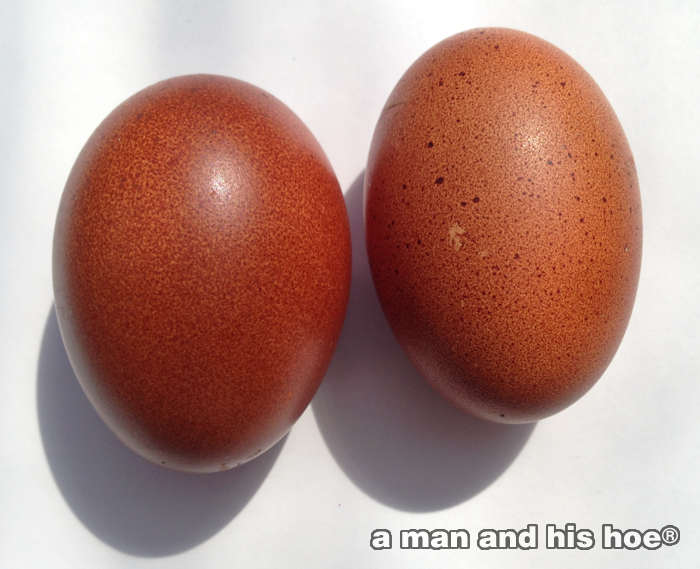

In a typical egg laying operation, three year old hens (156 weeks) don’t exist. Most hens are done with after either 70 weeks or between 100 and 130 weeks. Those that make it to 100-130 weeks, have gone through a forced molt, a rather gruesome practice. Dr. Temple Grandin and Catherine Johnson write in Animals Make Us Human: Creating the Best Life for Animals:
Forced molting shortens the time the chickens spend replacing their feathers and gets them back into full production faster. To force-molt an egg-layer flock, farmers shorten the hens’ daylight hours to six to eight and starve them for ten to fourteen days. That makes the birds mold and shortens the molting period by eight weeks, but it is very cruel. The hens’ mortality rate doubles, they become aggressive, and they develop stereotyped pecking and pacing. They are probably suffering severe frustration of the SEEKING system and overactivation of RAGE.
The next time you buy eggs, take a moment to ask yourself if the hens which laid those eggs suffered a forced molt. If you don’t know, consider asking the poultry farm which produced your eggs if they force molt their hens. It’s your food. You have every right to know how it was made, after all, you are going to be putting it in your mouth.
- The Disposal of Spent Laying Hens – The Animal Welfare Foundation of Canada
- Commercial Egg Production and Processing – Purdue University
- Forced Molting – Wikipedia
- Forced Molt: Starving Hens For Profit – NW Edible
- HSI Lauds India Ban of Starvation Force Molting of Laying Hens – Humane Society International:India
- How to Read Egg Carton Labels – The Humane Society of the USA

